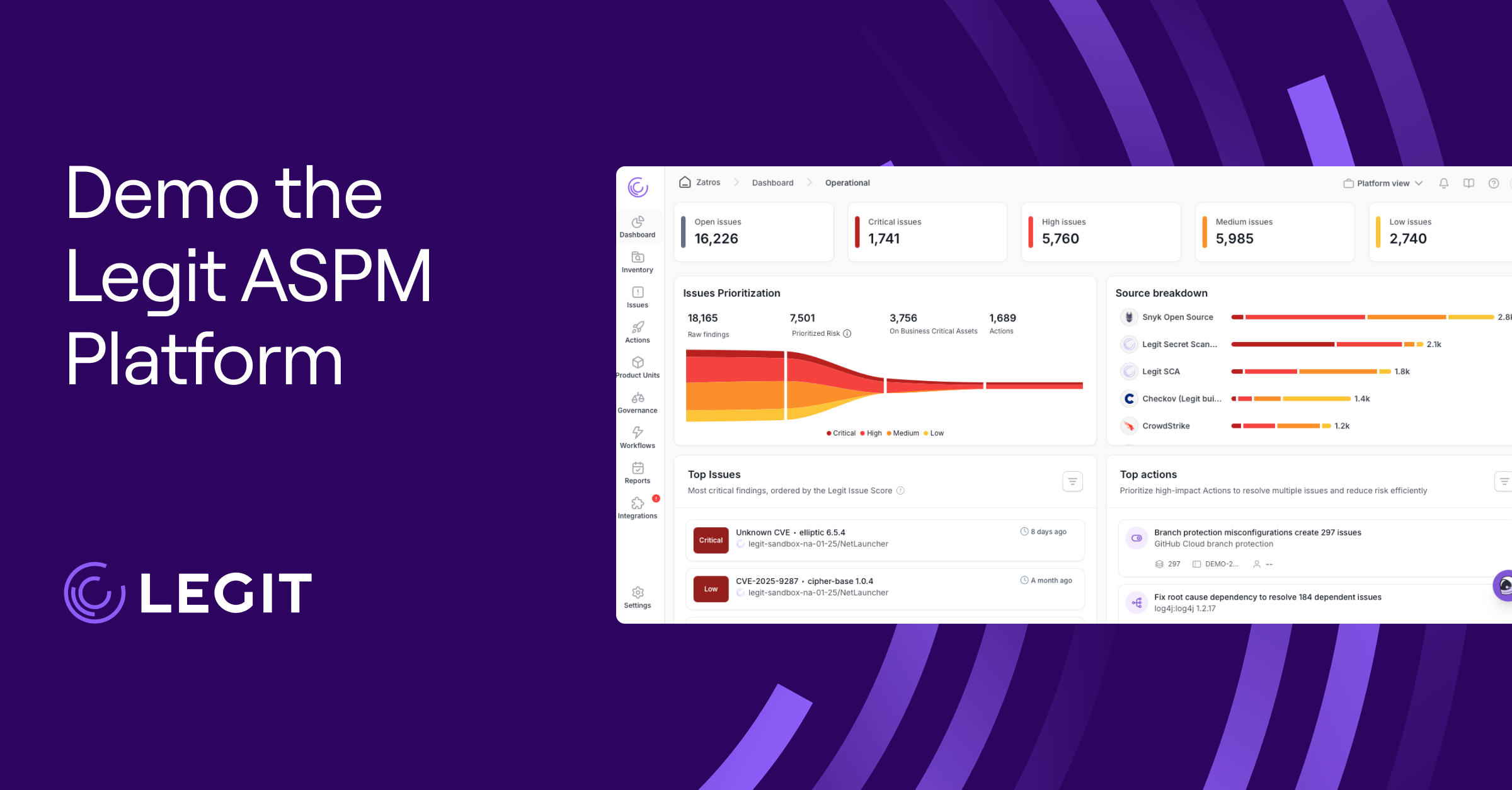As more organizations and applications rely on open-source software, it is crucial to ensure that the software is secure and free from vulnerabilities. This is particularly important today, where cyberattacks are more sophisticated, frequent and often targeting vulnerable open source code. By following these tips, you can strengthen your organization's software supply chain security and protect your systems from these common threats.
Open Source Software Security Risks
Open-source software has come a long way since the early days of Linux when it was first viewed as a means to democratize software and offer a free alternative to expensive paid versions. The benefits to open-source software are numerous, but they also come with far more inherent risks than before.
The use of open-source software in the software supply chain raises significant concerns about introducing vulnerabilities into the system. One of the contributing factors to these vulnerabilities is that open-source software is typically developed by only a handful of contributors. Furthermore, the sheer size of open-source packages in use can make it impossible to inspect everything in an effective way, making it challenging to identify and remediate security vulnerabilities. These inherent risks associated with open-source software make it crucial to have a robust software supply chain security strategy in place to protect against potential threats.
12 Open Source Software Security Best Practices for Safety
Securing the open-source software supply chain is crucial for the overall security of an organization's software and the organization itself. Here are 12 simple, but effective tips to help keep your open-source software safe:
1. Vet Sources for Lookalikes
Vetting sources for lookalikes is an important step in mitigating the risk of open-source components in the software supply chain. Cybercriminals often create fake repositories that mimic trusted sources and distribute malicious software (also known as typosquatting attacks). By vetting sources for lookalikes, organizations can reduce the risk of using malware-ridden open-source components. This can be achieved by using tools such as source code analysis (SCA) and checksum verifications to validate the authenticity of the source and the software. The key is to establish a rigorous process for evaluating sources, including regular checks and updates to stay ahead of emerging threats.
2. Establish Rules for Developers Using Open-Source Components
Developers play a crucial role in securing the software supply chain, and it is important to establish rules for their use of open-source components. These rules should address the dangers of open-source software and provide guidance on best practices for identifying and mitigating security risks. For example, developers should be encouraged to use components only from trusted sources and regularly update their components to ensure that they are secure. Additionally, organizations should have a process in place for regularly reviewing the open-source components used in their systems to identify any security vulnerabilities. By establishing these rules and others, organizations can help mitigate the risks associated with open-source software.
3. Keep Your Component Inventory Updated
Keeping your component inventory updated is an important aspect of securing the software supply chain. An inventory of all the components used in the software, including open-source components, helps organizations to identify and track security vulnerabilities. By regularly updating the component inventory, organizations can ensure that they have the latest information about the components used in their systems, including any vulnerabilities and patches. This information can be used to assess the risk of each component and determine the appropriate course of action, such as updating to a more secure version or discontinuing its use. Additionally, regularly updating the component inventory can help organizations to stay compliant with regulations and industry standards. A recommended way to maintain such inventory is to integrate SBOM generation within the organization’s SDLC.
4. Identify & Remove Unpatched/Obsolete Components
Identifying and removing obsolete components from the open-source supply chain is critical for maintaining the security of software systems. Unpatched components can leave software systems vulnerable to exploitation, while obsolete components may contain vulnerabilities that are no longer being addressed by the software community. Regularly monitoring the components used in the software and keeping them up-to-date is essential for mitigating the risk of open-source components. Organizations should have a process in place for regularly reviewing the components used in their systems, identifying any that are obsolete, and removing them or updating them to a more secure version. By doing so, organizations can ensure that the open-source supply chain remains secure and that their software systems are protected from known vulnerabilities.
5. Keep All Software Updated
Keeping all software updated is an important aspect of securing the software supply chain, including open-source components. Software updates often contain patches for known vulnerabilities, as well as new features and enhancements. By regularly updating all software, organizations can reduce the risk of open source security issues and ensure that their systems are protected against known vulnerabilities. This includes not only the operating systems and applications used by the organization, but also any open-source components that are part of the software supply chain. Organizations should have a process in place for regularly monitoring software updates and installing them in a timely manner to ensure that their systems are protected against known vulnerabilities and that the open-source supply chain remains secure.
6. Always Employ the Principle of Least Privilege
The principle of least privilege (PoLP) is a key security concept that is applicable to the use of open source components in the software supply chain. The idea behind PoLP is to give users only the minimum level of access that they need to perform their work. This can be accomplished by carefully controlling user access to the open-source components and systems that make up the software supply chain. By using PoLP, organizations can maintain a secure software supply chain and reduce the risk of open-source components.
7. Examine Vendors' Code
Examining the code of vendors is another important step that organizations can take to secure their open-source software supply chain. By examining the code, organizations can gain a deeper understanding of how the open-source components are used within their software and identify any potential security risks. This can include reviewing the code for vulnerabilities and reviewing the vendors' security processes and procedures. By thoroughly examining vendors' code, organizations can gain a better understanding of the open-source software security and reduce the risk of open source components.
8. Shift Security Left
Shifting security left is a key concept in securing the open-source software supply chain. By implementing security early in the development process, organizations can identify and mitigate potential security risks before they become major problems in production. This is a proactive approach to security that reduces the dangers of open-source software and helps to prevent security incidents from occurring by addressing them earlier in the pre-production development environment. During the development process, organizations can perform code reviews, security testing, and penetration testing to identify any potential security risks. Additionally, organizations can implement security-focused processes and procedures to help ensure that the open source components used in the software supply chain are secure.
9. Use a Software Bill of Materials (SBOM)
Using a Software Bill of Materials (SBOM) is an effective way to secure the open-source software supply chain. A SBOM is a comprehensive list of all the components used in a piece of software, including open-source components. By having a SBOM in place, organizations can gain a better understanding of the open-source components used in their software and identify any potential security risks. Additionally, a SBOM can help organizations to track the status of open-source components and ensure that all components are kept up to date. This can include monitoring for security vulnerabilities and ensuring that all patches are applied in a timely manner. By using a SBOM, organizations can improve their visibility into the open-source components used in their software and reduce the risk of open source components in their supply chain. This is a critical step in maintaining a secure software supply chain and protecting sensitive data.
10. Trust, but Verify All Sources
When it comes to open-source software security, it is important to trust but verify all sources. This means that organizations should take the time to carefully assess the credibility and security of open-source components before incorporating them into their software. This can include reviewing the source code, verifying that the component has been vetted by the open-source community, and checking for any known security vulnerabilities. By verifying all sources, organizations can help to ensure that they are using open-source components from credible sources, reducing the risk of introducing security vulnerabilities into their software supply chain. Additionally, organizations should continue to monitor their open-source components even after they have been integrated into their software. By doing this, they can ensure that any security vulnerabilities are identified and addressed in a timely manner.
11. Remember There Is No Governance in the Open-Source World
It is important to remember that there is no governance in the open-source world, meaning that there is no governing body responsible for ensuring the security of open-source components. This can be a significant concern for organizations because there is no guarantee that the open-source components they are using are secure. To mitigate these risks, organizations must take responsibility for the security of their open-source software supply chain by implementing best practices, monitoring new threats and vulnerabilities, and using the available tools and technologies to assess and monitor the security of their components. They should also regularly update their components to address any known vulnerabilities and be vigilant in their efforts to address any new security threats that may emerge. Ultimately, organizations must be proactive in protecting themselves from the risks inherent in open-source software as no one else will do it for you.
12. Secure the CI/CD Pipeline From Other 3rd Party Components
Open source components can be a double-edged sword, providing a wealth of useful functionality while also introducing security risks into your software supply chain. To help mitigate these risks, it is important to secure the entire CI/CD pipeline, including the components that are part of that pipeline. This involves examining each component (GitHub actions, 3rd party tools and plug-ins, etc.) for potential vulnerabilities and taking steps to remove or mitigate them. Additionally, it is important to ensure that all 3rd party components are secure and that the pipeline is protected from malicious actors who may try to exploit it. By securing the pipeline from 3rd party components, you can help to ensure that your open-source software remains secure and that your software supply chain remains protected.
Keep Your Entire Software Supply Chain Secure
In conclusion, open-source software components are widely used in software supply chains, but they come with a wide range of inherent security risks. By following the tips outlined in this blog such as vetting sources, establishing rules for developers, keeping component inventory updated, employing the principle of least privilege, examining vendor's code, using a software bill of materials, and verifying all sources; you can significantly mitigate these risks. By prioritizing the security of your software supply chain, you can ensure the integrity and safety of your software. Legit Security provides enterprise solutions for securing your software supply chain and preventing these open-source software security risks.
To explore the benefits of end-to-end software supply chain security in more detail, schedule a demo today.
Download our new whitepaper.

.jpg)
